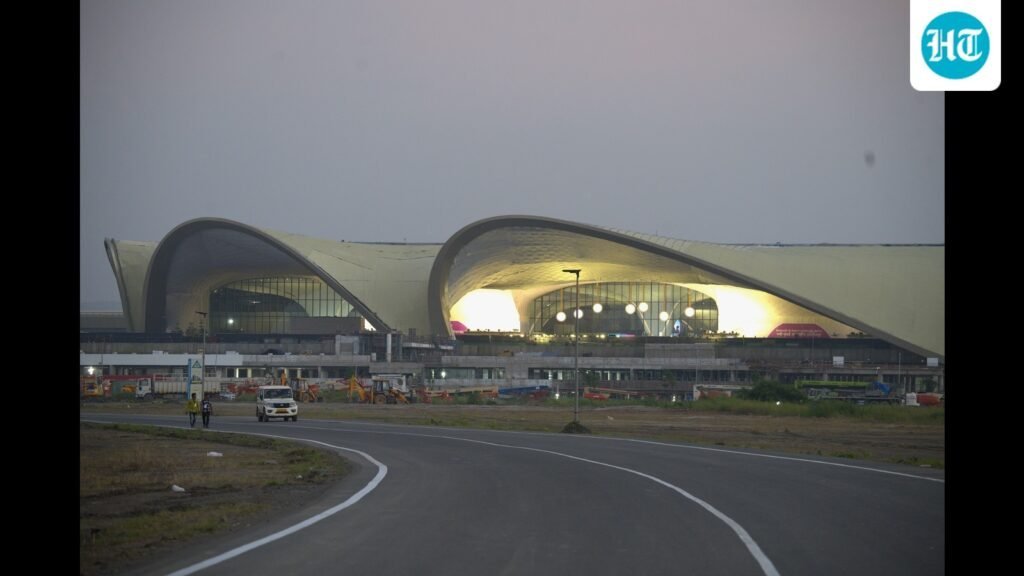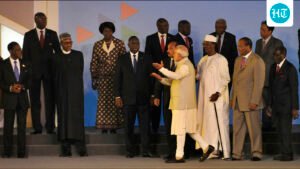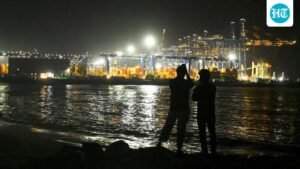
I’ll begin with the good news. On October 8, Prime Minister Narendra Modi inaugurated the new Navi Mumbai International Airport (NMIA). The first phase of the NMIA, built at a cost of just under 20,000 crore, is expected to be operational from December, one year post the initial deadline of December 2024. The initial handling capacity of the solo functioning terminal is expected to be around 20 million passengers a year.

The NMIA constitutes a memorable milestone for India’s aviation sector. It would not be an overstatement to say that India’s aviation sector and airlines over the years have paid a very high price for the failure of successive Indian governments to build a much-needed second airport in the country’s financial capital.
Back in 2005–2006, Jet Airways, which was one of the leading airlines then headquartered out of Mumbai, had even begun to levy a congestion surcharge after it estimated it was losing $6 million every quarter on account of this.
Newer Mumbai-headquartered airlines such as Akasa Air have been forced to park aircraft at Bengaluru and other locations due to the non-availability of parking bays at Mumbai. Time slots for airlines are virtually impossible to come by.
Further, since Delhi and Mumbai together account for a majority of air traffic in the country, any delays and extra costs on these sectors have a cascading effect on other routes in the network, all of which adds up to a larger toll. So, the arrival of NMIA is certainly a major cause for celebration.
Now comes the bad news. Although Navi Mumbai was selected for its proximity not just to the MMR but also Pune, Thane and Alibaug, it is expected that almost 60% of the total traffic the airport attracts will come from South Mumbai and the Western suburbs. While the airport may be up and running next month, getting to it from this and other parts of Mumbai promises to be quite a task. As things stand today, a random Google Maps entry for directions from South Mumbai’s Cuffe Parade on a weekday afternoon showed the driving time as 100 minutes!
As readers would be aware, Mumbai is a city of “ifs and buts”. Forever changing political alliances and the mercurial balance of power have defined the city, leading to a situation where infrastructure has often been built only when something is coming apart at the seams. So herein lies the rub: How will this airport be viable or of interest unless passengers can reach it easily?
When I had visited the airport site — then in the construction phase (October 2023) — the NMIA team had painted a rosy picture of just how accessible the new airport would be. Their assessment was based on the assumption that three key projects that were then under construction would be commissioned before the airport is functional — the MTHL, Bandra-Versova Sea Link, and Worli-Sewri Connector.
Based on this, it was estimated that the distance from Cuffe Parade or Colaba, approximately 40-45 km to the NMIA through the MTHL, will be covered in about 40-45 minutes.
This, however, is unlikely to happen in a hurry. Of the three, only the MTHL is up and running. The Bandra-Versova sea link is expected to take at least another two years, and the Worli-Sewri connector, yet to get started, might be several years away. From the western suburbs, travel to the new airport is likely to be even more of a challenge. As things stand, residents expect the travel time to the NMIA to be twice that of the existing airport and the cost by taxi (private cars aside) to be more than double, making it a far less attractive proposition than the existing airport. This will have to be factored in by airlines regarding the fares on offer and by the airport regulator when setting aeronautical charges. Any gains from non-aeronautical revenues are likely to be some years away.
Eventually, the airport is also expected to be accessible by a combination of train and metro routes, all of which will be a trade-off between time taken and cost incurred, but residents argue that this is several years away, as metro connectivity remains limited. It is also envisaged that passengers should be able to hop onto a ferry service accessible from Radio Club or the jetty at Colaba to reach the Nerul/Belapur jetty, from where they can head to the airport using a shuttle bus or taxi in a total of approximately 50 minutes. If that sounds pretty ambitious, that’s because it is!
In short, the full benefits of the much-awaited new airport will have to wait.
Anjuli Bhargava writes about governance, infrastructure, and the social sector. The views expressed are personal







